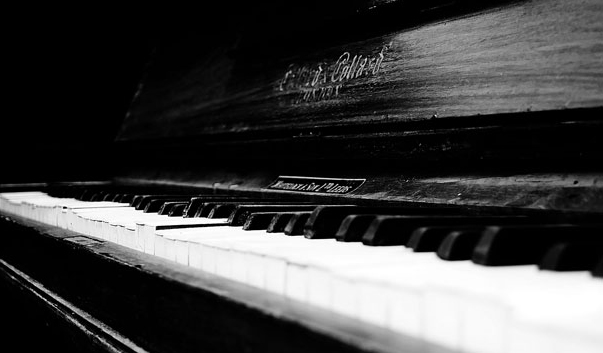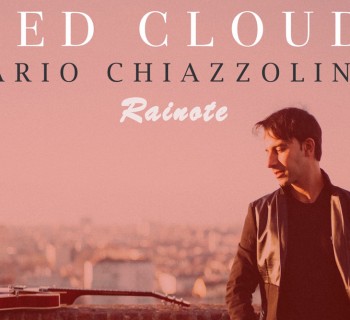In Praise of Crossover
Crossover can get a bad rap. Some of it is deserved. It’s easy to think of profit-motivated crossover albums that ended up trivializing both of the traditions involved. But as a classical musician, I’ve found collaborative projects with people who are not in my field to be hugely energizing, to the point where I think all artists should consider them.
Crossover can be great because it helps with the hardest aspect of being an artist––keeping the well of your own originality fed. The demands of genre and tradition can be deadening, and while that may be particularly true of classical music (an art form excessively interested in its heritage), it’s not untrue of most art forms. The dead hand of the past can weigh on all of us. What is a genre if not a tradition?
If you escape your own sound world, you discover that other artists are doing really interesting things. When you really pay attention to other creative people––the kind of attention that you pay when you embark on a treacherous voyage with someone else, unsure of the destination––you can’t help but notice wonderful things. You discover that they have an aesthetic that illuminates the world in unexpected ways.
I first discovered this when I collaborated with singer songwriter Tift Merritt on a project that ended up as the album Night. So many discoveries! She played in what she called the pocket of the beat, not quite on the back of the beat, as you might in jazz, but making the beat feel rounder so that you could inflect it while barely departing from it. As a pianist I was used to having so many notes, but she wanted exactly enough music to frame the words. She has an ability to make small harmonic changes sound large. Looking back, I realize that I learned to play Philip Glass’s work partly through working with Tift. There were wonderful practical discoveries too. Who would have thought that you don’t need to bow when you first walk onstage for the reason that you haven’t done anything yet? I hadn’t thought of the stage as a set, but Tift made her stage visually appealing with textiles and lamps.
Pamelia Stickney, another musician I’ve worked with, is a real bohemian, an expatriate living in Vienna and a master of the theremin, an instrument that is almost unplayable. Associated with ghost noises in mid-century horror films, the theremin has a wide range of sounds and a real Flash Gordon verve. Pamelia has created a whole repertoire on the theremin, channeling boundless creativity into the instrument. She uses looping pedals to layer and press it into sonic contortions that are completely fascinating. We made a fabulous recording of Winter from Vivaldi’s Four Seasons and I will now never hear the Ravel piano concerto without hearing clear theremin effects in the piano part (yes––Ravel must have heard the theremin!).
The creative world is wider than music. When I play Bach’s Goldberg Variations I hear dance. Choreographer extraordinaire Pam Tanowitz created a dance piece with me which gave me a privileged insight into another artist’s process. She is deeply interested in and informed about the history and culture of dance, but her work stands apart from that knowledge. She seemed to learn dance history in order to forget it in the moment of creation. There is no narrative in her work, no romance of men lifting women or dancers chasing each other. It’s the closest thing I've seen to an abstract art form. Her manner of working, too, is remarkable: unhurried, collaborative but deeply confident that the ideas will come. Our collaboration did not use dance to illustrate the music, but to work out of sync with it, creating two worlds of complementary abstraction. Today’s artistic world, for better or worse, is dominated by the power of story, so it is inspiring to see an art form that does not need to hold that familiar structure as a support.
All of these collaborations have broadened my own vision, made me more open to what other artists see. I have brought these visions into my own practice. My experience has been that, by making sure that you are regularly provoked and unsettled by other people’s work, you begin to introduce the right kind of artistic uncertainty into your own life. I recently created what I can only call a devised theater piece, The Eye is the First Circle, collaborating with video artist Laurie Olinder and lighting designer Davison Scandrett. Twenty years ago, I would never have dreamed of doing anything like it. Most of my artistic life is still classical piano, a repertoire that I continue to find deeply satisfying. When I sit down at the piano, though, I now see and hear more because I have made myself open to other artists. It’s changed my playing, but more importantly it’s changed my own sensitivities. That’s an experience I recommend. •
GRAMMY nominated American pianist SIMONE DINNERSTEIN first came to wider public attention in 2007 through her recording of Bach’s Goldberg Variations. Since that recording, she has had a busy performing career. She has played with orchestras ranging from the New York Philharmonic to the Melbourne Symphony and has performed in venues from Carnegie Hall to the Seoul Arts Center. Her twelve albums have all topped the Billboard classical charts. She lives in Brooklyn with her husband, son and her dog, Daisy.
See simonedinnerstein.com • facebook.com/simonedinnerstein • instagram.com/simonedinnerstein














